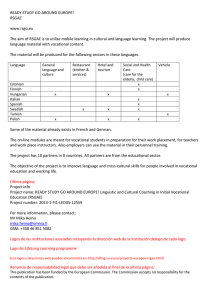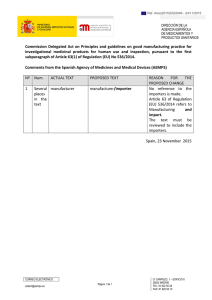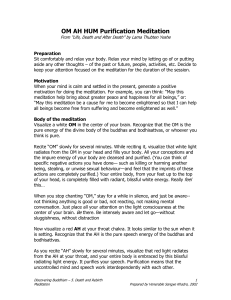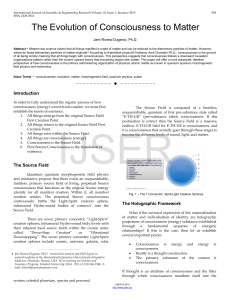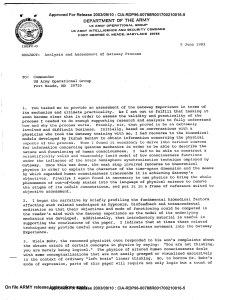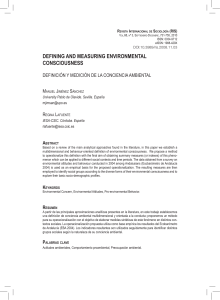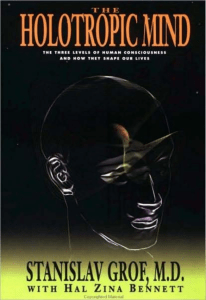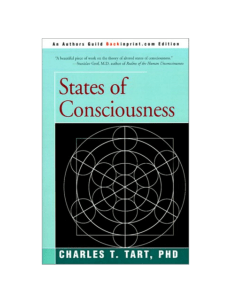The why, the how, and the what of mental
Anuncio
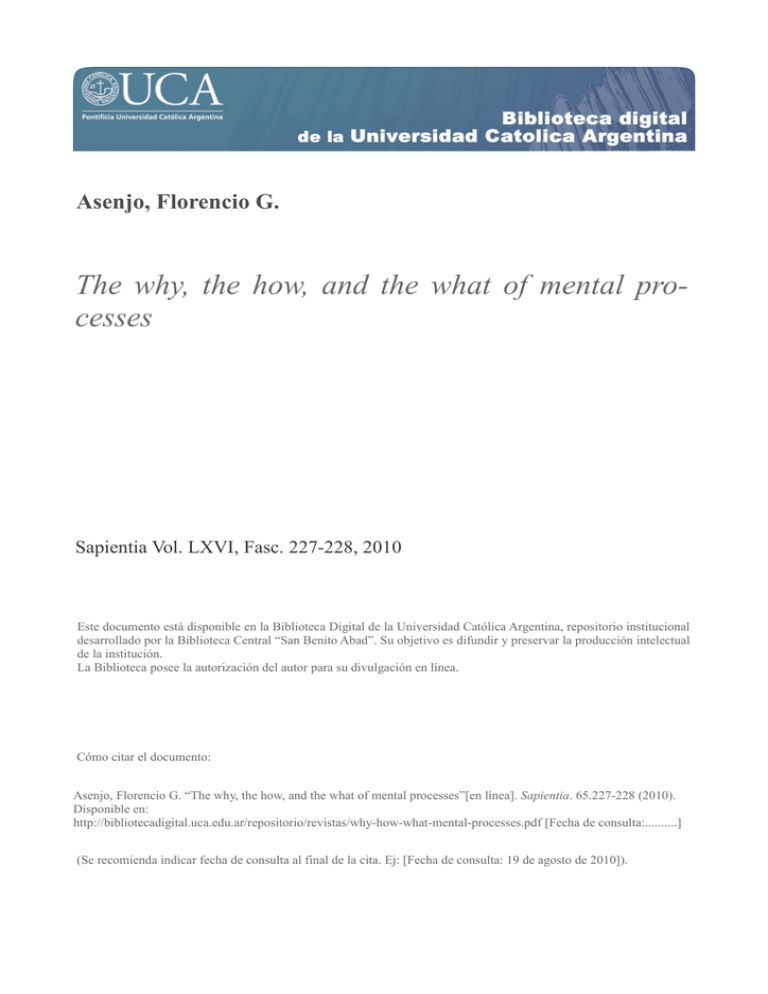
Asenjo, Florencio G. The why, the how, and the what of mental processes Sapientia Vol. LXVI, Fasc. 227-228, 2010 Este documento está disponible en la Biblioteca Digital de la Universidad Católica Argentina, repositorio institucional desarrollado por la Biblioteca Central “San Benito Abad”. Su objetivo es difundir y preservar la producción intelectual de la institución. La Biblioteca posee la autorización del autor para su divulgación en línea. Cómo citar el documento: Asenjo, Florencio G. “The why, the how, and the what of mental processes”[en línea]. Sapientia. 65.227-228 (2010). Disponible en: http://bibliotecadigital.uca.edu.ar/repositorio/revistas/why-how-what-mental-processes.pdf [Fecha de consulta:..........] (Se recomienda indicar fecha de consulta al final de la cita. Ej: [Fecha de consulta: 19 de agosto de 2010]). 24 Asenjo Why, How, What:Maquetación 1 03/01/2012 11:03 Página 179 FLORENCIO G. ASENJO University of Pittsburg The Why, The How, and The What of Mental Processes 1 Purpose Let us ask the following questions concerning any given mental process: (i) which are the reasons for its being, (ii) which are the ostensible characteristics of its evolution, (iii) which is the inner essence of the process, its identity, its suchness, and (iv) which are the relations between such why, how, and what. Sometimes these questions can be answered to our complete satisfaction: when somebody asks “Why did you eat the pie?” and the answer is “Because I was hungry” the exchange can at a neutral level be considered complete. But when one reflects further into the more profound reasons of anything that happens, then it is impossible to say if a good explanation can always be given concerning such why. Obvious answers to daily questions may satisfy our unreflecting curiosity, but not our deeper inquisitiveness. Years ago I attended a lecture by the famous physicist George Uhlenbeck on the subject of the various states of matter. It was an excellent lecture that clarified a number of points concerning the overall knowledge of the field at the time. Toward the end of the talk, after having filled a big blackboard with many elucidating equations, he said: “And yet, when all is said and done, the states of matter still remain a mystery.” Indeed, why are there states of matter at all? An insightful, honest remark which, if we think about it, it merely states the obvious. To the chagrin of their parents, children keep asking the why of everything, never getting satisfied with the answers given to them, and therefore asking more questions as though they were budding metaphysicians, a sincere curiosity that time later dulls. I remember once asking my poor father: “Why am I myself ?”, a question which of course he was not able to answer to my heart’s content. Whereas the “Why?” is sometimes difficult if not impossible to deal with, to answer “How?” is often only a matter of acuity, concentration, and persistence in bringing up what becomes obvious once presented. I want here to avoid staying at the level of pure generalities; hence, in order to make my discourse as concrete as possible, I shall offer first a brief sketch of the treatment of directed feelings given by Alexander Pfander in his “Zur Psychologie der 24 Asenjo Why, How, What:Maquetación 1 03/01/2012 11:03 Página 180 180 FLORENCIO G. ASENJO Gesinnungen”1. In contrast with so many phenomenologists who deal chiefly with the method of their discipline, this author excelled in the precision and detail with which he considered some of its applications, specifically to the emotions of love and hate in the work just mentioned. 2 Why? From time immemorial a considerable number of explanations have been advanced to explain the origin of consciousness, its acts and processes. They have come from all kinds of learning, religion, literature, and the arts. Yet, we still do not know what causes awareness, will, feeling, and particularly love. Love, being an attraction between persons, or between persons and objects or objectives is supposed to be explained by saying that it is caused by a hidden “chemistry.” But the attractions and combinations of chemical substances, apt as they may be as a prototype of love’s interactions, cannot obscure the fact that models do not explain anything; they merely describe by transpositions. They do point out aspects in a salient way, they may even become mines of valuable discoveries on whose base the course of events can be forecasted and even controlled, but models do not provide reasons, just regular sequences of possible events. This is the case even when the model is of the same nature of what is modelled. No theory of chemical bonding can really explain why hydrogen and oxygen combine to form water: we learn about the chemical factors involved in the combination but nothing about the combination’s ultimate necessity. Leibniz once asked: “Why is there something rather than nothing?” but he provided no real answer to such query. Is the question “Why love?” equally unanswerable? We must admit that gradually or suddenly love often emerges brought up by the most mysterious causes in the midst of the most incongruous circumstances. “The heart has its reasons that reason knows nothing of ”2: Blaise Pascal dicturn seems to be still the last word on the subject of “Why love?” But we will come back to Pascal’s remark later. 3 How? Every act of consciousness takes place as a brief span in the overall ongoing movement of the mind. Each act flares up and disappears to make room for other acts. Acts are not instantaneous; it takes a certain amount of time for each of them to go from their surging to their fading; they also sometimes overlap. If they appear to turn into a lasting state it is because our intuition integrates them into a seemingly continuous movement when in fact they remain a sequence of individual acts of consciousness whose differences are negligible. The mind proceeds in such cases with the simplest kind of inertial motion in which new forces do not intervene. This type of predetermined movement is called in physics “kinematics” as opposed to “dynamics”, the latter looking at forces in relation to motions, including the sudden emergence of forces which are not fully predictable. Husserl was interested in the preordained 1 A. PFANDER, “Zur Psychologie der Gesinnungen,” Part I, Jahrbuch für Philosophie und phanomenologische Forschung, I., 1913, pp. 325-404; Part II, ibid, III, 1916, pp. 1-125. 2 B. PASCAL, Pensées, 277. 24 Asenjo Why, How, What:Maquetación 1 03/01/2012 11:03 Página 181 THE WHY, THE HOW, AND THE WHAT OF MENTAL PROCESSES 181 manner in which the phenomenal traits of given mental processes appear in sequence, all moving in accordance with an original impulse, and bearing no surprises. On the whole, Husserl’s phenomenology only touches causality incidentally. He says: “All science of the real is causally explanatory if it wants to determine what the real is, [but] the real itself that stands in casual relations is not readily given”3, hence, causality is not itself the object of the phenomenological endeavor because “it is not readily given.” This is wrong. The what of mental processes, their suchness, teeming with forces and swarming with causal relations, is indeed given to us readily and directly. When we fall in love, for instance, we go beyond the appearance of the person we love —the purely phenomenological characteristics— to experience the reality of that person directly, from within. The loved person’s suchness we see with our own inner eyes in acts of unmediated empathy, without veils, barriers, or reductions in a thoroughly direct intersubjective exchange. And this is a dynamic, not a merely kinematic apprehension, since in the exchange we incorporate that person’s life, self, and motivations into our own consciousness as our own. Phenomenology in the sense Husserl defines it is his middle period moves us away from the inner core of mental processes, their creative actuality, their dynamic causality, their what. However, things were not so clear-cut when Alexander Pfander published his Phenomenology of Willing in 19004 before Husserl introduced his idea of phenomenological reduction intended to put reality between parentheses in order to concentrate on the description of pure consciousness as it appears to the self. In this work Pfander describes will not as a purely kinematic phenomenon: he also enters into the causality that propels it from moment to moment. He places the process of will as a special case of the more general phenomenon of desire. We will something that is not fully present; but then, the realization of what is desired involves the intervention of forces: the power of the mind is exerted to make real what initially we merely wished. This exertion is a dynamic process that takes time. Pfander says: “There should be a causal nexus between the realization of what is desired and the realization of other events”5. The action of the self is essential, will is not the enactment of a passive sequence of events, a purely inertial unfolding of the mind; the exertion of the will as lived has each of its decisions being “the final point of a more or less ramified causal series. The production of what was desired is in causal dependence of myself ”6. Abrupt forces take over, and each act of decision is one such force that changes the course of action and perception. Will is noninertial; a decision suddenly happens that emerges between the acts: when it occurs, it is a mental absolute. This early kind of phenomenology merges the how and the what of willing; at the end of a stream of deliberations, a discontinuous outflow that defies description inaugurates a new phase of the will process, a willing will acting all by itself. 3 E. HUSSERL, Ideas Pertaining to a Pure Phenomenology and to a Phenomenological Philosophy, Book III, trans. by T.E. Klein and W.E. Pohl, The Hague: M. Nijhoff, 1980, pp. 3-4. Italics in the original. 4 A. PFANDER, Phanomenologie des Wollens. Eine psychologische Analyse, Leipzig: Johann Ambrosius Barth, 1963 (3rd. ed.). 5 Ibidem, II, 1. 6 Ibidem. 24 Asenjo Why, How, What:Maquetación 1 03/01/2012 11:03 Página 182 182 FLORENCIO G. ASENJO When Pfander published his “Zur Psychologie der Gesinnungen” he was already to a great extent under Husserl’s influence and phenomenology was for him then a science of the how, not of the what, a kinetics of the mind, not a dynamics. Directed feelings (Gesinnungen), as opposed to diffuse states, moods, or dispositions, are feelings with an object or an objective. In this work, Pfander deals specifically with love and hate as prime examples of his general characterizations. He makes the subject alive by giving a sequence of traits that really give us those feelings in the flesh. Item by item one cannot help to realize how truly obvious each is when we think of it, how pertinent for our apprehension of love as it is experienced. What follows is a selection of such traits paraphrased and slightly expanded to make them intelligible out of context. This should suffice for our purpose, after all, the description of anything as concrete as love can never be completed and has to be stopped. 1. The emotion of love is submerged in a distinct feeling of warmth. Psychological heat is a phenomenological aspect of hate, of course, but love’s warmth has an unmistakable, uplifting quality of its own. Everyone who has had the experience of love, specially requited love, has felt this broadening quality. 2. Love is invigorating, it raises the level of psychological energy of the person who feels it. Love, be toward a person or an objective, creates the ability to perform tasks which could not be accomplished without it. 3. Well-wishing is part of love, hoping for the success and fulfillment of the person and objectives one loves. From being passive bystanders love turns us into actively rooting for whatever we have an affection for. 4. Love sustains the loving person, it becomes a support and a nourishment when it is returned. It is a place of the mind where the self finds shelter. 5. Love has an enhanced sense of togetherness. Loneliness becomes impossible, sentiments of solitude are incompatible with the exhilaration of sharing a company whose enjoyment thoroughly brightens the mind. 6. Love reaches out, it is an outgoing current whose object lies beyond the self. So is visual perception, but love lacks the detachment that vision possesses, it is always engaged, it makes the self part of the scene. 7. Love for a person induces a continuing inner conversation which mentally taps the person on the shoulder, approvingly, then retreats to listen in expectation. Such conversation is felt as important, as being to a degree a justification of one’s own existence. 8. Love is an existential affirmation, not in the least a grammatical one: the entire consciousness asserts. Even in silence, without thinking in words, without moving a finger, the whole being nods. 9. Love makes the person profound, the sense of purpose that is part of it brings depth of insight and thoughtfulness to consciousness. Life is never a light affair when a person is in love. 24 Asenjo Why, How, What:Maquetación 1 03/01/2012 11:03 Página 183 THE WHY, THE HOW, AND THE WHAT OF MENTAL PROCESSES 183 10. Love also heightens the person, the position of the self in the midst of all ongoing actions is raised, and the sense of satisfaction is concurrently enhanced. All these characteristics apply especially to requited love. Pfander does not make a theme of unrequited love, which after an incipient exhilaration precipitates the self into restlessness, alienation, melancholy, and depression. Whereas requited love heals all wounds, love not reciprocated turns into a kind of psychological illness accompanied by a loss of self-esteem, of interest in the world, and of keenness of perception. 4 WHAT? If the how of a mental process is its manner of being, the what is its being itself. The characteristics of the what, which we grasp as directly as those of the how, are infinite in number, as it is the case with anything concrete, mental or physical. Indeed, appearance and reality are both inexhaustible; also, they are inseparable. There is a tradition of centuries which asserts that we cannot capture reality with absolute immediacy. The ancient notion of maya, the idea that our perception of the world is a cosmic illusion, that all our senses give us is not real but a delusory veil that hides the absolute beyond, has lasted to this day with enormous impact. Literature reflected this conception in works such as Calderon’s “Life is a Dream.” But it was Kant with his notion of noumenon —the thing-in-itself, unknowable and eternally beyond all our powers of apprehension— who has made the strongest impression on our thoughts on the ultimate limits of consciousness. Husserl’s idea of a phenomenological reduction and his prejudice to the effect that “the real itself is not readily given” are a reflection of Kant’s powerful influence. The belief in the inaccessibility of the thing-in-itself has produced a conceptual wound that is still open and bleeding. True, our perception —and hence our thoughts— is limited by the scope of our senses, the spectrum accessible to our vision, our hearing, our touch, our coenesthesia, etc. Still, when a stone hits me in the head I do not doubt the reality of that fact and the immediacy of my perception. I only lament reality giving itself so directly to me. Similarly, the knowledge that my wife loves me is given to me directly, her love is not an illusion, I experience it with total immediacy and it sustains me from within. The what of the real world as well as of mental processes —mine and that of others— are there for us to grasp in their absoluteness despite the limitations of our senses and of our general finiteness. Only the power of Kant’s mind can explain why we still have to cope with the persistent fantasy that what we seize and what seizes us are either mere illusions or at best distortions of something whose true being necessarily escapes us. As we did with the how of love, then with the help of Pfander’s distinctions, we want now to list the characteristics of the what of love, its inner essence. Paving the way for this task, let us introduce the setting within which such 24 Asenjo Why, How, What:Maquetación 1 03/01/2012 11:03 Página 184 184 FLORENCIO G. ASENJO characteristics must be placed: the so-called stream of consciousness. Time being a property of any mental process must also be considered intrinsic to any essential characteristic of love. Of course, models do not substitute the direct perception of the what of love and of its temporal setting, but the model of fluids in motion to represent the stream of consciousness is indeed very helpful to keep things in perspective. In a moving fluid several currents can be discerned proceeding simultaneously in counterpoint. Springs and sinks are normal features of such motion. A spring is a source of new emerging currents within the overall stream, whereas a sink is a hole in the stream into which already flowing currents are swallowed to the point of total disappearance. We can think of mental processes fairly adequately with the image of a moving fluid in mind. Thus, the irruption of unexpected events and the intrusion of other minds start new currents within one’s own stream running in parallel with the preexistent ones: they function as springs. Requited love is also a constant spring, a continuing source of ever-new currents. Unrequited love on the other hand plays the same role that sinks play in the dynamics of moving fluids: it functions as a continuously open “hole” in the mind through which old aspirations, efforts, and hopes are steadily guzzled. Literature has been in the forefront of describing forcefully and consistently the streamlike nature of consciousness. The last chapter in James Joyce’s Ulysses for instance is a prime example of such psychological aptness reached through purely literary devices —no punctuations, the unbroken use of the first person, etc. In it, Molly Bloom’s uninterrupted internal monologue is realistically presented, a narrative of her reminiscences and ruminations as they occur to her one after another before going to sleep. To read such description is to enter into Molly’s mind as vividly as though she were a real person. On the background of what we have just said about the stream of consciousness we can now give a first inner characterization of love, especially requited love. Johann Gottlob Fichte said: “Whatever you love, you live”7.This statement we must take literally. It is typical of psychology and phenomenology to bring up revealing distinctions, but equally important is to point out partial or total identifications of aspects falsely thought to be absolutely distinct. Love and life are often identifiable to a great extent, and when not, at the very least, love implies life. Marina Tsvetaeva concurred: “Love means life”8. And René Char: “I love you and you live in me”9. Pedro Salinas exclaimed: “What happiness to give oneself to the great certainty that another being, outside myself, very far, is living me, that there is another being through whom I look at the world”10.This life of the self in and out of one’s consciousness during the experience of love is described by Joaquín Xirau as follows: “To lovingly compenetrate, to understand and exalt the other, is necessary to situate myself in the place of the other person. Love does not consider its personal center as identical to mine, but precisely as the other’s, original and not trans- J. G. FICHTE, Anweisung zum seligen Leben, Leipzig: Felix Meiner (2nd. ed.), 1923, p. 13. M. TSVETAEVA, Selected Poems, trans. by E. Feinstein, New York: Penguin Books, 1993, p. 73. 9 R. CHAR, Fureur et Mystère, Paris: Gallimard, 1962, p. 28. 10 P. SALINAS, Poesías Completas, Barcelona: Barral, 1975, p. 256. 7 8 24 Asenjo Why, How, What:Maquetación 1 03/01/2012 11:03 Página 185 THE WHY, THE HOW, AND THE WHAT OF MENTAL PROCESSES 185 ferable”11. Clearly it is not a matter of merely introjecting the other’s feelings into a faded representation, it is a matter of living those feelings elsewhere. Thus, requited love —the relation— takes a reality of its own, a tertium made up of two currents moving in opposite directions. People who have experienced this intersubjectivity of love can identify with the sentences just quoted, relive through them the suchness of their own exhilarating emotions. Neither maya, nor the noumenon, nor the phenomenological reduction, or any other psychological barrier makes sense to those fortunate enough to have learned to live in one another after tearing all veils. This is why “No one is truly dead until no longer loved”12. Having partially identified love with life, we must now ask what is the difference between life and inert nature. Alfred North Whitehead found it in the creative activity that belongs to life, biological and psychological. He says: “Life is the process of eliciting into actual being factors in the universe which antecedently to that process exist only in the mode of unrealized potentialities”13. But creative activity involves emerging forces, this is why life —and hence love— is a dynamics. Yet, not only love, all mental processes identify with life, or at least involve it, all are subject to transformations elicited by creative forces surging in the midst of inertial movements. Wilhelm Dilthey introduced the term “Erlebnis” to refer to the fact that acts of consciousness are first and foremost “lived experiences.” According to Dilthey, this connection of conscious experience and life is real, and there is nothing more ultimate than it, a connection which necessarily “contains a relation of inner and outer”14. His concept of Erlebnis is to be distinguished from that of a purely inner experience (Erfahrung), which Kant defined as a conceptual ordering of inert sensations. Dilthey’s Erlebnis transcends the conception of mental acts as purely subjective phenomenons, it shares with life an objective status involving a real mix of inside and outside. There is no expression in English which forcefully conveys the meaning of Erlebnis, “lived experience” is not sufficiently descriptive, it lacks the proper strength, the ontological implications, and so does le vécu in French. José Ortega y Gasset, a great admirer of Dilthey, created the word “vivencia” to translate Erlebnis into Spanish. Vivencia is a truncation of “convivencia”, an old word meaning living in harmony and conviviality. Vivencia is now well established in Spanish and it does convey in one word the inner and outer sides of Erlebnis, its mixture of subjectivity and physiology. To talk about mental processes as streams of vivencias is a way of identifying their essences with life, the real, palpitating life moved by the creative forces that propelled it. But to bring up creative forces into a description of a mental process induces also the thought of energy, both psychological and biological. It is obvious then that we must consider “the amount of life” that a mental process carries with it, and then the increase or decrease in such J. XIRAU, Amor y Mundo, México, Fondo de Cultura Económica, 1940, p. 140. T. GAUTIER, quoted by R. Holmes, “The Fantoms of Théophile Gautier”, The New York Review, August 14, 2008, p. 63. 13 A. N. WHITEHEAD, Modes of Thought, New York: The Free Press, 1966, p. 151. 14 Quoted by R. A. MAKKREEL in W. Dilthey, Descriptive Psychology and Historical Understanding, trans. by R. M. Zaner and K. L. Heiges, The Hague: Martinus Nijhoff, 1977, p. 5. 11 12 24 Asenjo Why, How, What:Maquetación 1 03/01/2012 11:03 Página 186 186 FLORENCIO G. ASENJO amount of life that a mental spring generates. We intuitively understand the meaning of saying that so-and-so is “full of life,” or that unrequited love becomes a life illness that drags down the vital energies of a person. This idea of an amount of life may seem vague, but so it seemed the notion of “amount of information” in a given system before cybernetics defined it as negative entropy, that is, as a measure of order in a system whose positive entropy is a measure of disorder. Although we do not know how to measure the amount of life, we know what it means, we sense it, we detect it in us and in others, and do react to its ups and downs. And not only mental processes —emotions in particular— evolve as a function of the overall amount of life, the way we hold ideas as being productive or inert is also a function of the same variable. It is our underlying liveliness that makes us enthusiastic about a concept, feel invigorated by it, and make others feel that same when we explain it. This is so, in particular, in the way we think about the model of a given process, a thinking which may depend more on us than on how productive the model finally is. When we are activated by life, models may catch our imagination, then make the imperceptible perceptible, and lead us to understand the deep, broken causalities of concrete situations. Even if only partially adequate, such enliven models can reveal the connections between detail and context, connections which we might overlook without the models. In fact, in the best of cases, the models may become as close to the reality they model as to make us think of them as being almost a replica. Such models have existed from time immemorial. Music, for example, is a model of feelings, even though its nature is physical rather than psychological. It can be said that music captures feelings in the flesh —as long as the listener’s attention is enliven. Music and emotion become then almost congruent. Art too can produce similarly effective models exceedingly close to the concreteness of reality, physical and mental. Greek sculpture reached perfection in this regard. And there are paintings that seem to go beyond their modelling in reaching the essence of the reality they depict. Some portraits by Rembrandt and Velázquez have the superior value of giving us not only the appearance of the subject represented but the subject’s personality and character as well —directly. Velazquez portrait of Gongora in the Boston Museum of Fine Arts, for example, forces us to see the man behind the eyes, his attitude, his bearing; the more we look at the painting, the more we see the man portrayed alive. Literature at its best can produce a similar impact when combined with our own engagement. With a sufficient amount of life that we devote to a good text, a description can put us in touch with the absolute. Love, for instance, being such a rich emotion, has had its infinite variety tapped repeatedly in written words. Dante effectively makes sense of how he started a new life after having encountered Beatrice, for him a lasting experience that he put into memorable words in his La Vita Nuova. The mere thought of Beatrice’s eyes looking at him changed his entire outlook of life as well as his view of the world. The strength of his feelings can be shared to this day in his writings. 24 Asenjo Why, How, What:Maquetación 1 03/01/2012 11:03 Página 187 THE WHY, THE HOW, AND THE WHAT OF MENTAL PROCESSES 187 At the heart of love we have found life as its first essential characteristic. What else is there in the what of love? Out of an inexhaustible list, we must point out as an outstanding second characteristic its aesthetic dimension. The object of one’s affection, be it a person or an objective, is seen as more than attractive —beautiful. And, in the case of requited love, that beauty reflects on one’s own self image. The beauty seen in both parties is not a mere surface appearance, it goes deeper to the heart of the love’s object awakened by the beauty of the feeling itself. Years ago I attended a concert-lecture given by Nadia Boulanger. She was explaining the construction of a piece of music, excerpts of which she was playing at the piano. Then she suddenly stopped after playing a section and said in a surprisingly moving tone of voice: “This is beautiful!” With these unexpected words she made the audience aware of the interior presence behind the sounds, the touching quality which the sounds conveyed, the essence of the feelings behind a lovely fragment. Next, at the heart of love there is movement. Deep down, love is not a steady state but an active changing process. There are no impasses in love, a constant play of surging forces driving the self into leaps that keep renewing the novelty of the feeling from ever-new angles. And then there is also the inner impulse of giving and taking, the offering of one’s existence, and the acceptance of the reciprocal offering in requited love, a quintessential, exhilarating exchange. And then once more there is the uniqueness of the lived experience, the essential quality of its being felt truly as the world’s first love, neither a repetition nor anything that can be repeated. Such sense of uniqueness is also the inner mark of other mental processes, of course, but with requited love it has its own quality, the special touch of its being a most privileged coincidence. And then there is openness, unguardedness, availability, devotion, rejoycing, excitement, happiness, constancy, loyalty, deference, respect, concern, kindness, gentleness, interest, companionship, support, encouragement.... All obvious once stated, all essential. 5 Relations Between How and What The distinction between appearance and reality often subconsciously induces us to diminish the weight of the former with respect to its opposite. We tend to let the distinction become an invitation to set aside appearances in order to search for the “true” reality behind them. This is an inevitable consequence of the tendency of centuries to engage in a kind of value-ridden dichotomic thinking: having made a distinction, one or the other end of the dichotomy must prevail. This often leads to a betrayal of the facts. The reality we want to uncover may actually escape us if we disregard its appearances. Ultimately, appearance is reality, and it generates more reality all by itself. Take beauty, for example, it can be seen as mere appearance, but, as already remarked, it is also an inner quality, an essence; beauty is not only in the eye of the beholder: the beauty we see in the mind of the person who loves us is far from being a purely outward perception, we live it as an innermost absolute. Some appearances passively point at deeper realities; then the how leads us to a preexistent what, the two forming an unbreakable complex, not a dichoto- 24 Asenjo Why, How, What:Maquetación 1 03/01/2012 11:03 Página 188 188 FLORENCIO G. ASENJO my that can be severed. But sometimes the how is the source of new whats; then appearance generates reality. The warmth which is the appearance love first assumes creates the inner beauty we see in what we love, thus begetting a new person in the case of requited love: it is not possible to love and be loved without radically transforming the intrinsic reality of the parties involved. That the how is then a source of the what does not mean that the how is a mere condition of possibility of the what; more than that, that it is the cause, the reason of the what. The how is then the why of the what. Reality does not always precede appearance. The outwardly invigorating nature of love mentioned by Pfander is the cause of the inner excitement it engenders and of the rational certainty that follows concerning the suitability of the match. Pascal was not entirely right: heart and reason are not two separate universes apart from each other; sometimes the reason of reason lies in the heart. Is it not the love for the truth that makes the scientist struggle no end with mathematical equations? The triad why-how-what makes up a tightly interwoven complex refractory to any fictitious hierarchy, a complex whose components interact intimately without any one losing its identity or becoming more important than the others. The how can be the why of the what as often as the what is the why of the how. We are facing one of those circles of reason which merely reflect a corresponding ontological circle in reality. We can compare the situation we just described to the way in which the more specific circle “energy-and-matter” conveys the fact that energy is matter in action, while matter is condensed energy. The how of matter is energy, and matter is made up of condensed hows: appearance is reality in action, and reality is a consolidation of appearances. There is no thing-in-itself separated from the phenomenon, the phenomenon, at the time we apprehend it, shows us reality itself, not in its totality, but in its pristine state, whatever else reality may also be. Another useful parallel to what we just said is the inextricable relation that exists between ends and means. As we all know, the old saying that the end justifies the means can lead to the most appalling consequences. Aldous Huxley commented: “The end cannot justify the means, for the simple and obvious reason that the means employed determine the nature of the ends produced.”15. Indeed, it is the means that justify the end, because means come pregnant with their own ends, whatever our initial intentions were. The lesson to draw from this conclusion —one that Machiavelli chose to ignore— is that we must accept the primacy of the means, both mental and physical. Among the means helpful to reach an end is what we can call the “as-if behavior.” Let us explain what is intended by this expression. The causes of our instinctual behavior —when motivated by hunger say— are given to us directly; our body readily gives us the cause-in-the-flesh of our actions, without any barriers. Apart from the instincts, we also know that habit forms a second nature, as Lamarck pointed out. Often the reason for what we do is that we have done it repeatedly before. There is indeed motivating power in a habit, and this power can be tapped with the strategy of the “as-if behavior”, by 15 A. HUXLEY, Ends and Means, 1937, chapter 1. 24 Asenjo Why, How, What:Maquetación 1 03/01/2012 11:03 Página 189 THE WHY, THE HOW, AND THE WHAT OF MENTAL PROCESSES 189 which we signify the action carried out with the attitude that the objective of such action is inherent in the action itself, the means becoming the end as they unfold. Now, how to identify which are the “good” means? Which as-if behavior is truly “good”? The same way we choose our “good” ends, by relying on our conscience and on our heart. We could call the as-if strategy a form of creative behaviorism, except that behaviorism tends to be mindless, whereas what we are describing here places the mind at the center of our actions. Thus, behaving as if we were free —free to make a feasible decision, free to take an open course of action— actually makes us free. The “as-if ” that begins as a model-theoretic fiction brings after a while its own reality; a previously nonexistent state of affairs comes to be. The how generates a what. In the end, by assuming a form of thought with the course of action it implies we are in effect injecting, imposing a new existence in the world. In the totality of happenings, internal and external, streams of new actualities begin to take form and ultimately take over. As-if patterns of thought and behavior open the door to what otherwise would remain in the realm of lost opportunities. Dogen, the thirteenth century Zen master, held that practice and enlightenment are identical, that as practice takes over, one has already arrived; one does not have to pierce the veil of maya to achieve illumination only after long exertions of the mind. There is wisdom in Dogen’s remark, precisely the realization that the how begets the what. According to Kant we are condemned to live in a helplessly phenomenal world without any hope of ever touching the noumenon beyond. Yet, life is not a dream; reason understands that the heart creates reality, that means can become the thing-in-itself.

